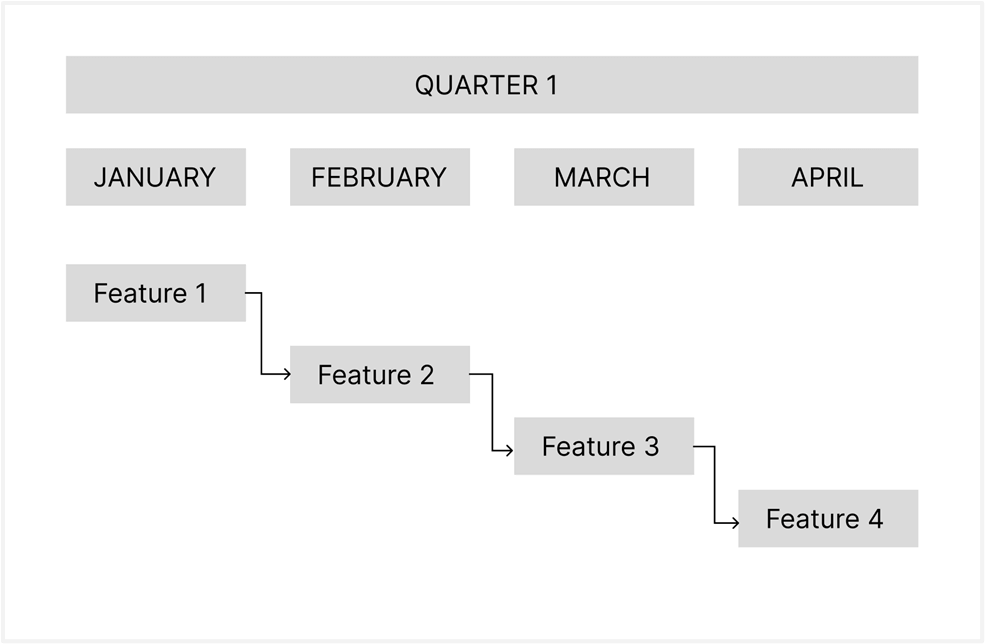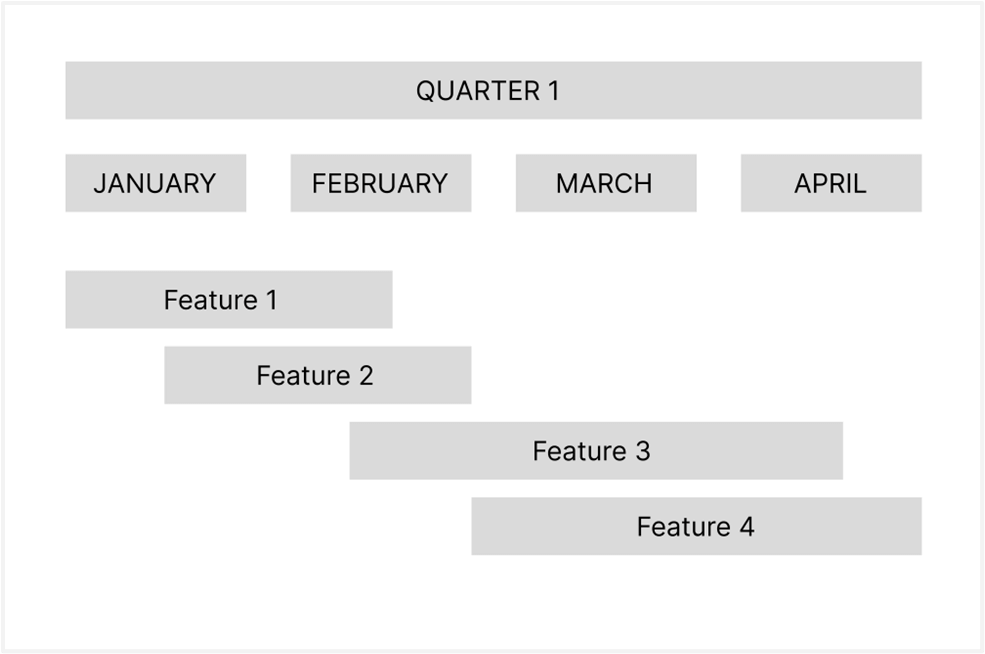
What is a product roadmap?
In today’s era when we are using technology to communicate with people from different parts of the world and work together via collaborative software tools one of the major challenges faced by product managers would be communicating the product strategy to the entire stakeholders which range from the top to bottom of an organisation. In order to avoid the communication gap and solve this challenge, one of the most effective tools is the product roadmap. There are many types of products available to us and most of us use at least one or more of them on a regular basis. This may be a service, an object, or an actual system that we use. It is important to understand that a product roadmap plays a key role in making the process of creating a product systematic and provides the product team with an overall visual summary of the vision and the direction of what is going to be built over a period of time when we attempt to understand the process of creating a product.
Why is a product roadmap so critical?
In order to effectively make sure that everyone on the team is aligned on the expected outcomes and the future direction of the product, a roadmap is used. There is a close connection between the product vision and the direction in which the product should be taken as a result of this. In this way, the team gains confidence in the product, since everyone is aware of what the team expects as a result of the project. This helps the whole team to rally towards a common goal as the project progresses.
A product roadmap is one of the few documents that will be accessible to everyone regardless of the role they play. Thus this document can be conceived as a strategic document that helps the team stay updated on where the team is in terms of the product’s life cycle and how the product is evolving and what is intended when the product evolves with its updated features and functionalities. This will also give the team an awareness of how the product will help solve the day-to-day problems the end-users are facing through its features and functionalities.
Product roadmap also helps in avoiding unnecessary confusion that might happen when you do not have a plan or when the team tries to deviate from the plan. This also helps all team members to be on the same page. The product roadmap gives the team an opportunity to provide necessary feedback to all the stakeholders involved, which includes the business and marketing teams.
Since the Product Roadmap attempts to cover all aspects of a product, including its vision and expectations, the team can identify any gaps well in advance at different stages of Product Development.
Key features of a product roadmap
The following key features make up a product roadmap, but they're not limited to them.
- A FEATURE is the basic unit of the product that is part of the functionality or which can be part of the 3rd party application.
- To understand the progress of development, STATUS MARKERS are used.
- To derive data-driven goals from a product roadmap, different types of METRICS are used.
- The PRODUCT VISION defines the future outcome of a product.
- The roadmap consists of TIME-FRAMES which define the time periods and specific dates aligned with the product goals.
- The product roadmap consists of GOALS which define the objectives that need to be done within a defined time period.
- Once the goals and product vision are defined, it's the PRODUCT STRATEGY that defines the plan of execution.
- The features and tasks are categorized into EPICS
- Features are prioritized based on different aspects and PRIORITYTY will help the team understand the features' importance.
A product roadmap becomes complete when the product vision and its strategy are defined by goals that are based on a time frame aligned with the product life cycle. It evolves based on customer needs and market trends. With the help of a product roadmap, the team can identify high-priority features, and business requirements and communicate expectations among the team.
Types of product roadmap
The roadmaps can broadly be divided into internal and external. The internal roadmaps are mostly used by a dedicated team such as the sales team, engineering team, etc. The internal roadmaps consist of data that is relevant to the team and might not be suitable for all the teams involved.
The engineering team roadmap would focus on milestones, sprints, features, and releases.It should be as detailed as possible to clarify what is expected during development. But compared to a sales roadmap it would focus more on functionality, features, and benefits. The sales team would prepare a roadmap that could even be customized for specific customers based on their needs. This mostly happens with enterprise businesses as they have a list of features aligned with their business needs.
The external roadmap would be mostly for customers and prospects, so it should be simple and easy to understand, with more visuals and less textual data.
Product roadmaps can be categorised into agile product roadmaps and waterfall product roadmaps. Most waterfall product roadmaps are used to communicate long-term commitments that follow a fixed timetable. Waterfall roadmaps are mostly used by companies that require long-term planning. In waterfall roadmaps, the features or the tasks aligned to the same happen one at a time and each task is interdependent. The second task/feature can be initiated only once the first task/feature. This makes the team with the task stick to the timeline in a strict manner since a delay in one task/feature could affect the rest. An example of a waterfall model roadmap can be found below.

In contrast, agile roadmaps are typically defined for a shorter time period. This is capable of being modified with additional changes that are critical. This makes it ideal for drastically changing market conditions. Software companies that follow agile methodology follow an Agile product roadmap. In KeyValue Software Systems, the Agile product roadmaps are mostly used for product development. It is one of the most followed roadmaps because of its flexibility. An agile roadmap gives the flexibility to change the duration and priority of a task/feature depending on the changing market conditions or in case of a change of plan by the team depending on decisions taken. An Agile product roadmap also has the flexibility to have tasks that can be initiated together which do not have dependencies among them based and it depends on the team's velocity and resources. An example of an agile roadmap can be found below.

Depending on the product and market conditions there could be a timeline that is aligned with the time-to-market criteria and in an ideal situation, the duration is 12 months or more if the team is aware of how the product will evolve based on the relevant data available but when it comes to a start-up scenario, the timeline can even be 3 or 6 months or a few months which could help validate the idea.
The process of establishing a roadmap is one of the steps you can follow in ensuring that your product is a success, no matter what size of product roadmap you create.

